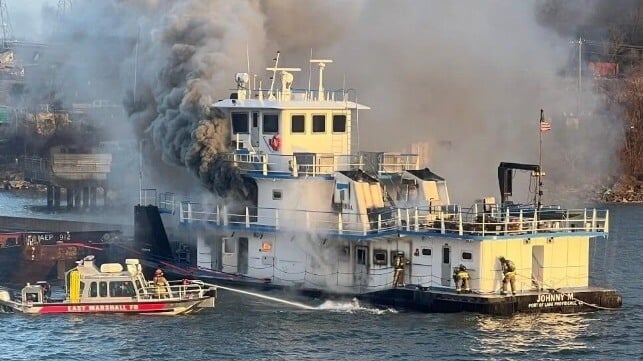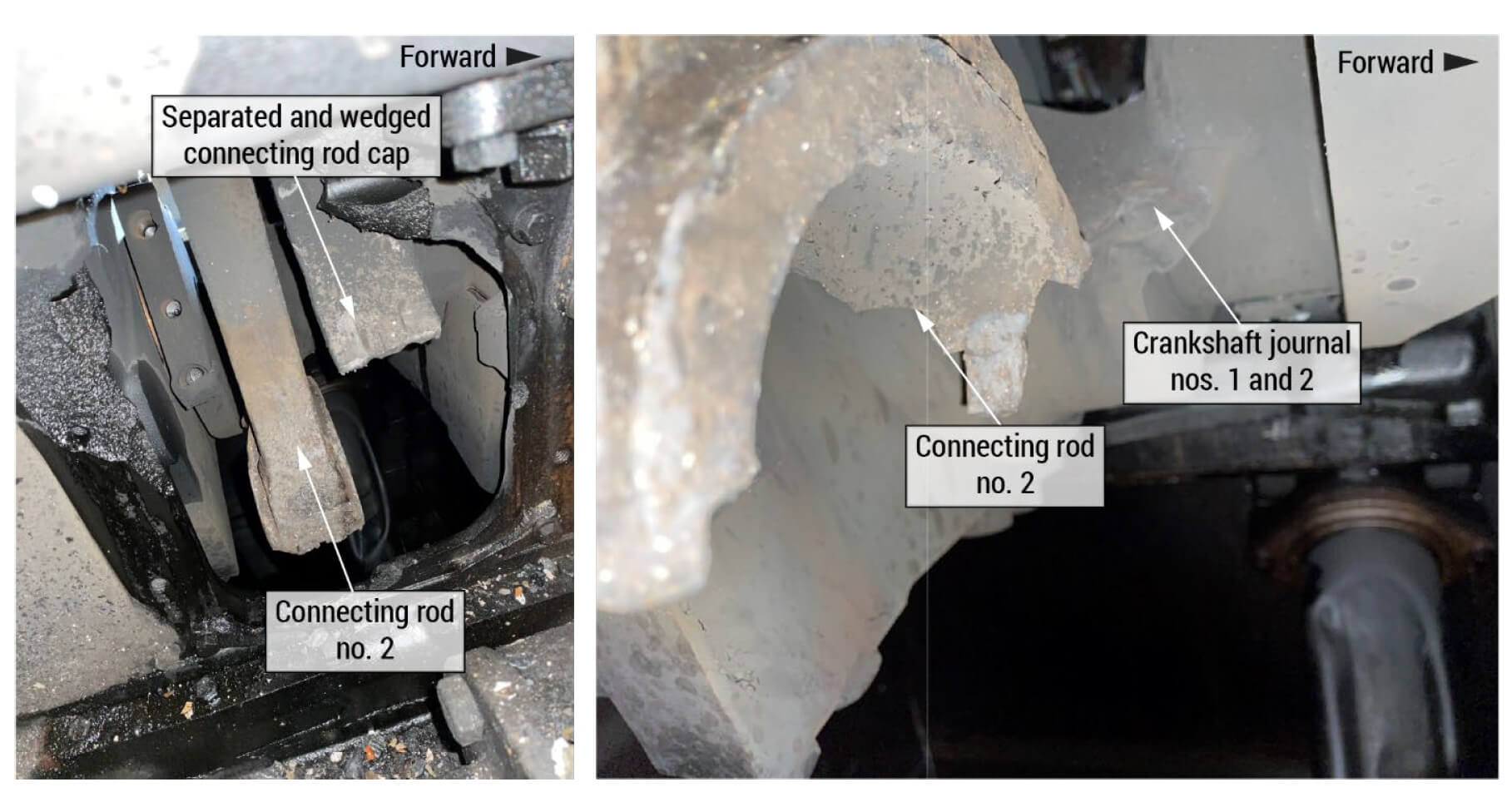Report: Flammable Ducting Let Engine Room Fire Burn Out of Control

Flammable air ducts defeated a towboat's fixed firefighting system during a blaze last year, according to the NTSB. When an engine room fire broke out, it burned through the ducts, opening the space to the atmosphere and allowing in oxygen - even though the crew closed every available damper and set off their CO2 system.
At about 0330 on January 30, 2024, the crew of the towboat Johnny M were maneuvering to enter the locks at the Kentucky Lock and Dam on the Tennessee River. They had four barges of rock and were pushing ahead. At 0333, as they slowly approached the lock wall to tie off, the pilot had difficulty maneuvering. Alarms began to go off in the wheelhouse, and a deckhand reported smoke around the outside of the deckhouse. Though they were not aware of it at the time, two cylinders on the port main engine had catastrophically failed, blowing fractured rod caps and other debris out through the crankcase covers on both sides of the engine. Evidence suggests that the engine continued to run on the remaining cylinders, throwing burning oil mist out through the side of the block and into the space.
The captain woke to the sound of smoke alarms in the accommodation spaces and ran to the wheelhouse. He had the pilot sound the general alarm, and the crew mustered on the foredeck. After an unsuccessful attempt to attack the fire with a fire extinguisher, the master closed the dampers and had the crew close emergency fuel shutoff valves. They activated the fixed CO2 system, and the engines all shut down.
At about 0350, the situation appeared more stable: the smoke had dissipated and the crew believed that the fire was out. The master took a moment to call the company and report the casualty, and the crew waited aboard the barge tow for further developments.
At about 0454, the smoke from Johnny M's engine room surged back. The captain led the crew back from the barges to the towboat so that they could recover their belongings, and then they abandoned ship onto a nearby Good Samaritan towboat.
The risk of fighting the fire from the good Samaritan vessel was deemed too high, and the vessel continued to burn unabated until about 0715, when a marine firefighting crew arrived and began to combat the blaze using the equipment on their fire boats. The effort continued until 1130, when the fire was declared out.
The damage to Johnny M was extensive and extended throughout all deck levels, especially the engine room and lower decks. The total cost came to $3 million.
 The catastrophic failure of the Johnny M's port side main engine, which initiated the fire (NTSB)
The catastrophic failure of the Johnny M's port side main engine, which initiated the fire (NTSB)
Fire investigators found that the air intake for Johnny M's main engines had been supplied by two flexible, fabric ducts. These uninsulated ducts ran from the air intake openings on the side of each stack and down into the engine room. The vessel was not equipped with covers for these particular intake openings, NTSB said, so the crew had not closed them. When the fire broke out, it burned through the fabric ducts, and the space was no longer sealed from the atmosphere; oxygen could get in, and the CO2 from the extinguishing system could get out.
"Had the vessel been outfitted with covers for the main engine combustion air intake openings or the flexible ducting been made of a fire-resistant or noncombustible material or structurally protected from fire, oxygen likely would not have been able to enter the engine room, and the CO2 fixed fire extinguishing system likely would have been effective," NTSB concluded. "Unprotected ducting has the potential to provide a pathway for fixed fire extinguishing agents, such as carbon dioxide, to escape and air to enter the engine room if the ducting is compromised by a fire within the space."

The flexible, flammable ducting aboard Johnny M (NTSB)
